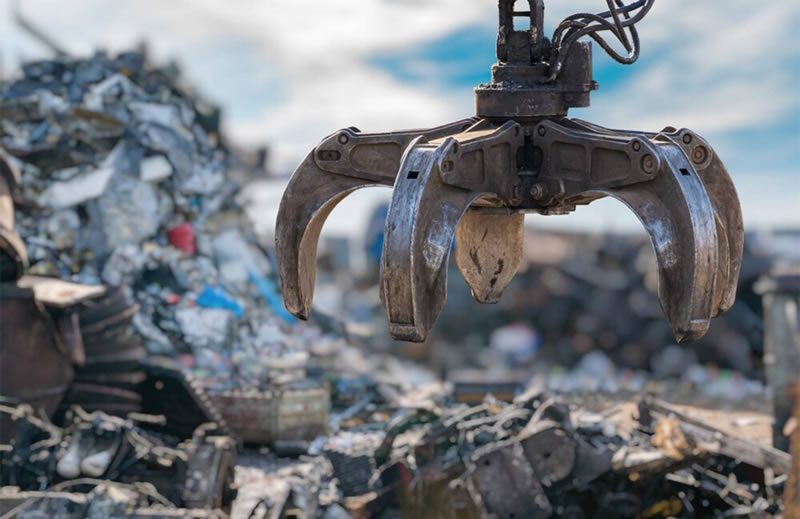

NOV 09, 2023
Recycling scrap metal plays a pivotal role in global economics and environmental sustainability. Scrap metal recycling refers to recovering scrap metals from end-of-life products, manufacturing scraps, and other sources to use as raw material in new goods production. Rates for scrap metal recycling can fluctuate based on many different determinants that not only impact scrap metal company profitability but also determine buyer decisions in this market. RCM Recycling helps provide an understanding of these factors vital for anyone involved in the industry.
Supply and demand, one of the fundamental economic principles, plays an influential role in scrap metal pricing. If demand for recycled metals increases, prices typically go up; on the other hand, when supply exceeds demand, prices tend to decline - such as when industrial growth, technological innovations, or economic policies either promote or inhibit recycling activities, such as an upsurge in construction activity that requires steel and aluminum components increases demand and therefore pushes up scrap prices.
The international markets also exert great influence over scrap metal rates. Many countries import large volumes of scrap metal to meet manufacturing needs; changes to economic status or policy in major manufacturing nations can radically shift the global supply/demand balance; for instance, policy modifications could cause increases or decreases in scrap importation from major producing nations, thus altering global scrap prices accordingly. Therefore, scrap metal buyers and sellers alike should remain mindful of international trade policies and economic conditions to predict price movements effectively.
Scrap metal can be seen as a commodity, and market forces and trends highly impact its prices. When virgin metal prices decline on the commodity market, scrap prices usually decrease accordingly because manufacturers opt for new or raw metal instead of recycling material as manufacturing options expand; conversely, when raw metal prices increase significantly, manufacturers turn towards scrap recycling as an affordable cost-cutting measure and drive demand up.
Energy costs play an essential part in shaping scrap metal rates, as metal recycling requires significant amounts of power for melting and reforming processes. Therefore, changes to energy costs have a direct bearing on recycling expenses - and can have an indirect effect on what prices scrap metal companies can offer to buyers of scrap metals.
Scrap metal prices depend heavily upon its quality; cleaner metals free from attachments tend to command higher prices due to less processing required before recycling them. Type is another key consideration: non-ferrous metals such as copper, aluminum, and brass tend to fetch higher prices due to rarer materials with particular applications in higher demand than ferrous ones such as iron and steel.
Environmental regulations have an enormous effect on scrap metal rates. Stricter laws can result in higher processing and recycling costs that reduce margins at scrap metal companies; on the other hand, environmental regulations can encourage recycling through incentives or penalties related to waste disposal - potentially increasing scrap supply while making scrap a more attractive choice for manufacturers.
Technological advances in how scrap metal is processed and recycled can have an enormous impact on rates. New technologies that increase efficiency or allow for the recycling of previously non-recyclable materials may expand supply while decreasing costs, impacting pricing. Furthermore, improvements to sorting and processing technologies may improve its purity and quality, thereby making recycled metal more cost competitive with virgin material.
Overall, economic conditions have an enormous effect on scrap metal prices. When construction and manufacturing activities decline during an economic downturn, demand for scrap metal tends to decrease as construction contracts come off-line or production ends altogether; on the contrary, during economic upswings, demand often spikes, leading to higher scrap prices overall. It is particularly significant how the construction, automotive, and electronics sectors use so much metal that their health matters for recycling markets in general.
With scrap metal being an international product, exchange rates can influence its prices. A strong currency makes foreign buyers' purchases of scrap more costly for domestic purchasers - potentially decreasing demand and prices altogether; conversely, a weak currency might increase exports, thus pushing rates upwards.
Scrap metal transportation from its source to recycling facilities and end users is another factor influencing rates of recycled metal prices. Fuel costs, availability of transportation resources, and distance between supply and demand centers all play into how much-recycled metal costs in total; high transportation costs can eat away at the profit margins of scrap metal companies while simultaneously decreasing pricing offered to buyers of scrap metal products.
Overall, scrap metal rates are determined by an intricate web of factors spanning macroeconomic conditions to the specifics of metal being recycled. Scrap metal recycling is an ever-evolving industry requiring constant attention to numerous variables; scrap companies and buyers need to understand these influences for successful market navigation and informed business decisions. Staying aware can also help mitigate risks or capitalize on opportunities as they arise. RCM Recycling is here to help with all your scrap metal recycling needs.